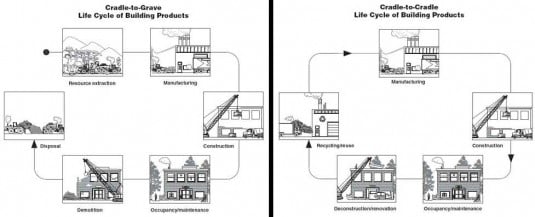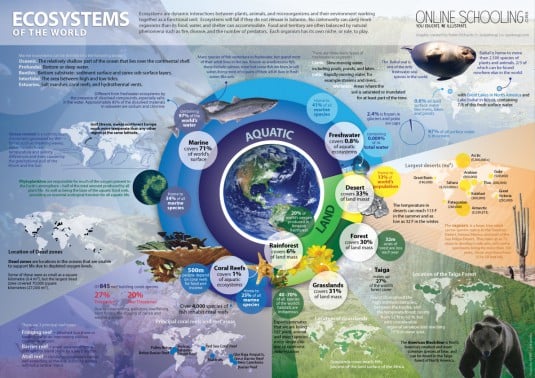
October 8, 2012
Techno-Systems Are not Ecosystems
Since the 1990’s, the term ecosystem and/or ecology have been used to refer to the complexity of how people, businesses, and technologies interact. I’ve always found this metaphor misplaced; it clouds the fact that systems of commerce and resources are not ecosystems at all. They are something different all together. According to biologists, an ecosystem […]

Since the 1990’s, the term ecosystem and/or ecology have been used to refer to the complexity of how people, businesses, and technologies interact. I’ve always found this metaphor misplaced; it clouds the fact that systems of commerce and resources are not ecosystems at all. They are something different all together. According to biologists, an ecosystem is built from a community of plants, animals, and microbes that interact and assist each to survive and thrive. In contrast, business ecosystems are for the good of only one species. Biological definition points toward how many living organism strive within a natural ecology. I think it’s time we stop calling the humanized supply chain of goods and services ecosystems – and call them what they are: techno-systems.
Techno-systems show that the goal of a large majority of human systems is spawning a web of humanity versus strengthening the web of life. The vast majority of businesses and technologies are webs interconnected for the sake of human society. They assemble, manufacture, and sell a collection of inorganic and non-living materials, techniques, and products like computers, economies or engineering purely for consumption. The end result is only more stuff being designed, produced, and consumed while doing little or nothing to induce biodiversity—in most cases, it actually causes biodiversity to decrease.
Consider the lifecycle of a building. To determine its energy, carbon or ecological footprint, you have to take into account all products that go into the building…concrete for the foundation, steel for the structure, wood for the doors, glass for the windows, paint for the walls, and asphalt for the parking lots. All of these products have gone through a long transformation from raw material to final product. Before reaching their final destination, these building products have traveled from facility to facility for harvesting, processing, manufacturing, assembling, and shipping.
 In some cases, the raw materials themselves aren’t natural. While wood for doors and 2x4s are products for processes, more like agriculture than a forest, the recycled content in a table or carpet is a managed resource far from the cycles of the natural world. Each and every step of that process depends on technology. Technology begets more technology – only moving the process farther from the natural cycles of the earth. And as a result, new technologies are required to make out-of-date aspects of the reliable or functional system – only minimizing the opportunity to serve more than one species. Although people are involved with each step, it ultimately depends on other technologies rather than organisms— hence the techno-system.
In some cases, the raw materials themselves aren’t natural. While wood for doors and 2x4s are products for processes, more like agriculture than a forest, the recycled content in a table or carpet is a managed resource far from the cycles of the natural world. Each and every step of that process depends on technology. Technology begets more technology – only moving the process farther from the natural cycles of the earth. And as a result, new technologies are required to make out-of-date aspects of the reliable or functional system – only minimizing the opportunity to serve more than one species. Although people are involved with each step, it ultimately depends on other technologies rather than organisms— hence the techno-system.

Why is this important? Separating ecosystems from techno-systems would allow us to identify efficacy without any confusion. Fundamentally and practically they are two very different things. Ecosystems have a tremendously long and successful track record of generating benefits for society and the natural world. The ecological services that true ecosystems generate produce clean water, clean air, sequester carbon for free, mitigate major changes in the climate, induce large amounts of biomass for consumption by multiple species have been working for millions of years. Human technology does not have the same credentials. Technologies are graded on a 10 to 20 year lifespan and have few advantages to more than one species (and in some cases, are even harmful to humans). Technologies typically consume resources themselves without producing any beneficial byproduct. In ecosystems, most byproducts are highly usable by scores of living organisms. Techno-systems need outside energy sources where a healthy ecosystem can sustain themselves.
Neil Chambers, LEED-AP is the CEO and Founder of Chambers Design, a research-based, contemporary design company, focused on next generation architectural and technological solutions based in DUMBO Brooklyn. He is the author of Urban Green: Architecture for the Future. Neil’s work includes urban design, green building design, energy assessment, master planning and habitat restoration. He is interested in the relationship between ecosystems, ecological services, buildings and infrastructure. He has taught at NYU and FIT as well as spoken throughout the United States and around the world.
Recent Viewpoints
Viewpoints
Finding Beauty in Climate Futures





